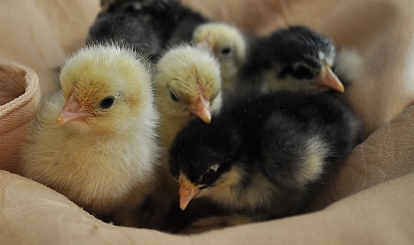 The most distinctive feature of the Cochin is the excessive plumage that covers leg and foot. The skin beneath the feathers is yellow and the egg color is light brown. Eggs are also medium in size. Standard weight is 11 lb for a cockand 9 lb for a hen. Our color varieties include buff and black. Cochins are well known as good mothers, even as foster mothers for other breeds, and they can lay many eggs, but usually not for extended periods of time. Cochins are also known to be good pet hens for the garden, as they are tame and regarded as one of the most 'friendly' chicken breeds. Cochins are rather quiet chickens, and tend to be quite calm as well.
The most distinctive feature of the Cochin is the excessive plumage that covers leg and foot. The skin beneath the feathers is yellow and the egg color is light brown. Eggs are also medium in size. Standard weight is 11 lb for a cockand 9 lb for a hen. Our color varieties include buff and black. Cochins are well known as good mothers, even as foster mothers for other breeds, and they can lay many eggs, but usually not for extended periods of time. Cochins are also known to be good pet hens for the garden, as they are tame and regarded as one of the most 'friendly' chicken breeds. Cochins are rather quiet chickens, and tend to be quite calm as well. Hatchlings Since 2014: 1,098 |